regional jewelry of Punjab
Regional Jewelry of Punjab-Introduction
The regional jewelry of Punjab is a vibrant reflection of the area's rich cultural heritage, characterized by bold designs, intricate craftsmanship, and a deep connection to tradition. Known for its opulence and elegance, Punjabi jewelry often features gold as the primary metal, adorned with striking patterns and embellishments.
From the elaborate chura and kaleere worn by brides to the iconic jhumkas and matha pattis that accentuate festive attire, each piece tells a story of the region's historical influences and social customs. Punjabi jewelry not only enhances the beauty of its wearer but also serves as a symbol of cultural pride and identity, passed down through generations.

Regional Jewelry of Punjab - Headpieces
Common South Asian Version:
- Tikka/Matha Patti: Across South Asia, headpieces like the tikka and matha patti are common bridal accessories. The tikka is usually a single ornament that hangs from the parting of the hair onto the forehead, often featuring a small gemstone or intricate design. The matha patti is a more elaborate version, with chains that extend along the hairline and a central pendant. These headpieces are often delicate, with detailed craftsmanship and sometimes feature kundan or meenakari work.
Punjabi Distinction:
- Punjabi Tikka/Matha Patti: In Punjab, the tikka is often larger, with a bold central stone and simpler designs focusing on the impact of size rather than intricate detailing. The matha patti in Punjabi jewelry tends to be wider and more prominent, covering a larger portion of the forehead, emphasizing symmetry and boldness. It may also feature additional chains on either side, making it a standout piece in bridal attire. The Punjabi matha patti is typically wide and covers a significant portion of the forehead, with a prominent central pendant. It often has a symmetrical design, sometimes with additional chains that extend to the side of the forehead.
- Origins: The use of headpieces like the tikka and matha patti has ancient origins in Indian and Persian cultures, symbolizing marital status and beauty. In Punjab, these ornaments have evolved to reflect the region’s love for grandeur, with designs that are typically larger and more prominent than in other regions.

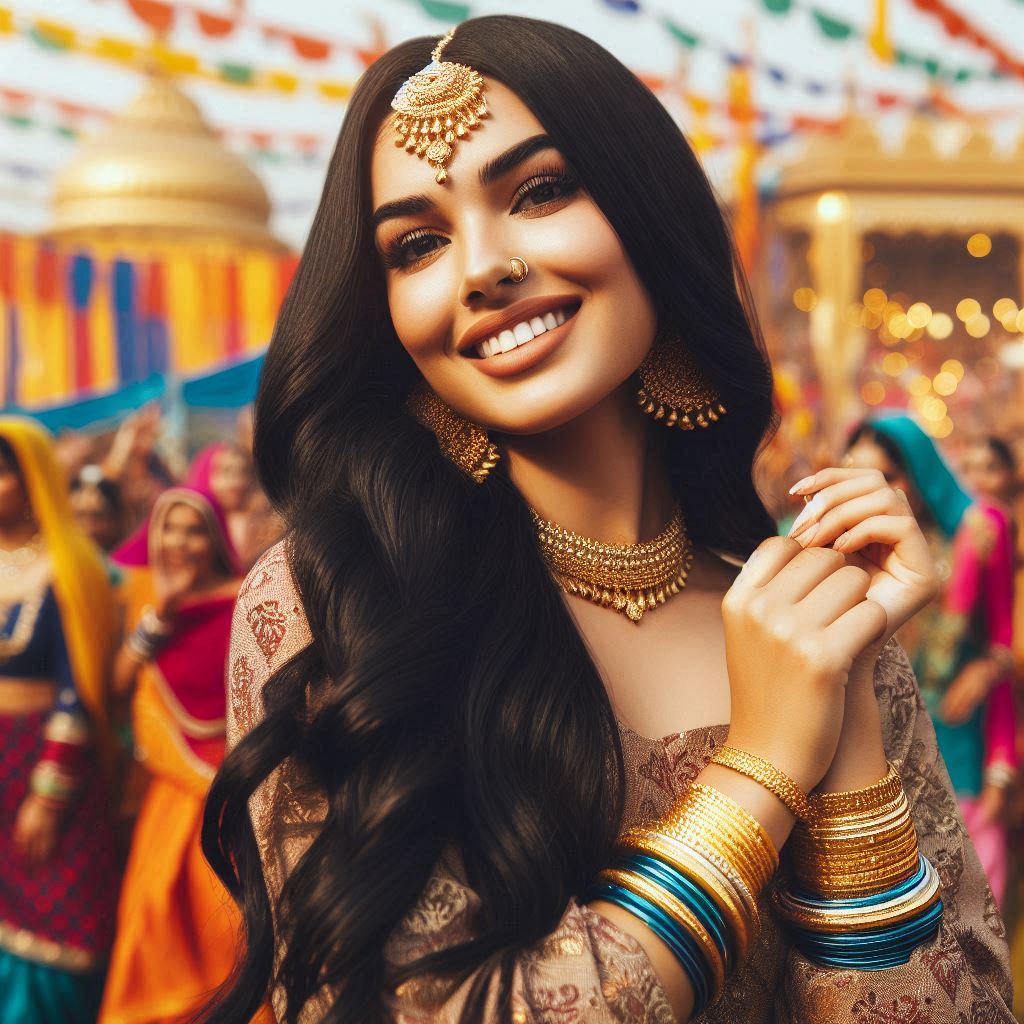
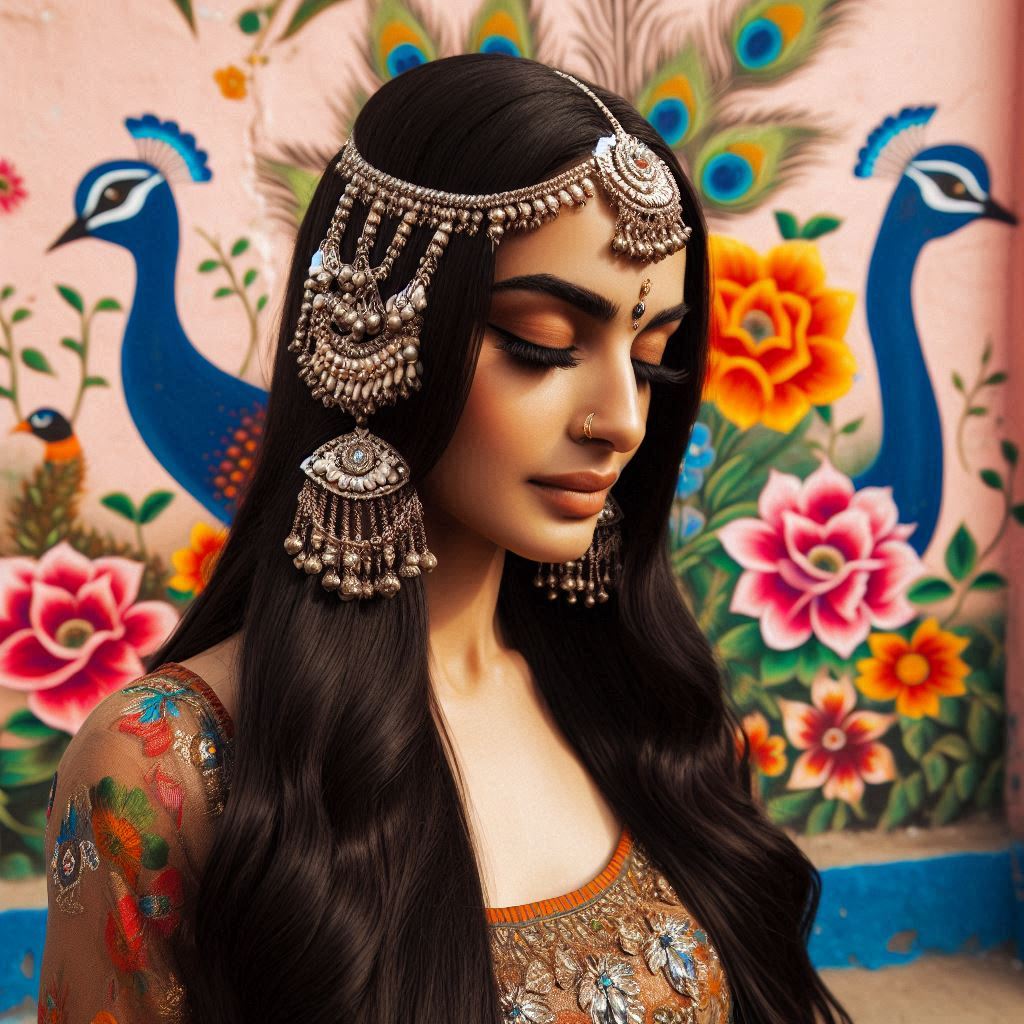
Regional Jewelry of Punjab - Parandi
- General South Asian: Parandi-like hair accessories also called Paranda, are less common in other regions. In South India, for instance, flowers or gold hair ornaments might be used instead of a parandi, focusing more on floral arrangements or gold accessories.
- Punjabi Distinction: The parandi is distinctly Punjabi, made of colorful threads with gold or silver tassels, often used to accentuate long braids. The emphasis is on vibrant colors and simple yet striking designs. Punjabi jewelry is characterized by its boldness and simplicity, with a strong emphasis on gold and symmetrical designs.

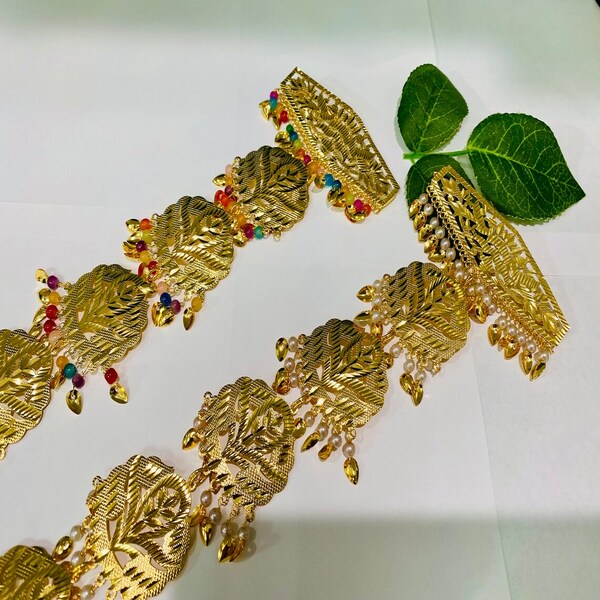
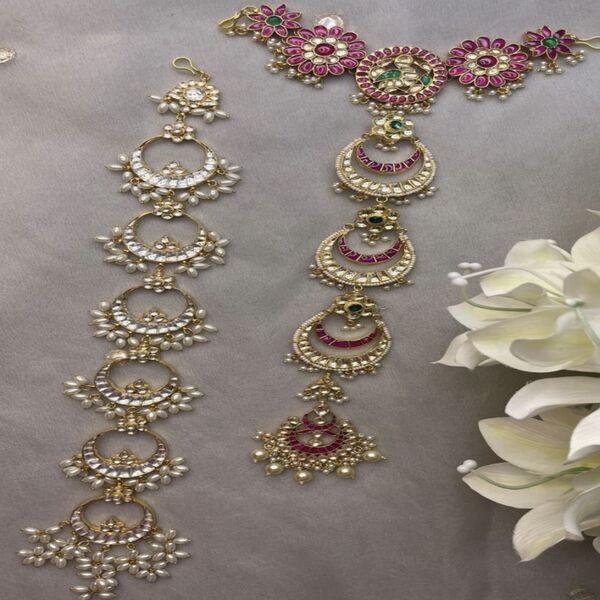
Regional Jewelry of Punjab - Nose Ring/Nath
- General South Asian: In contrast, naths in regions like Maharashtra or Bengal might be more delicate, with additional pearls or gemstones adorning the hoop and chain. The naths in these regions may also include more intricate patterns within the hoop itself.
- Punjabi Distinction: Punjabi naths are typically large and bold, with a simple, elegant chain connecting to the ear. The design focuses on a single large hoop with minimal embellishments, making the piece a strong focal point.
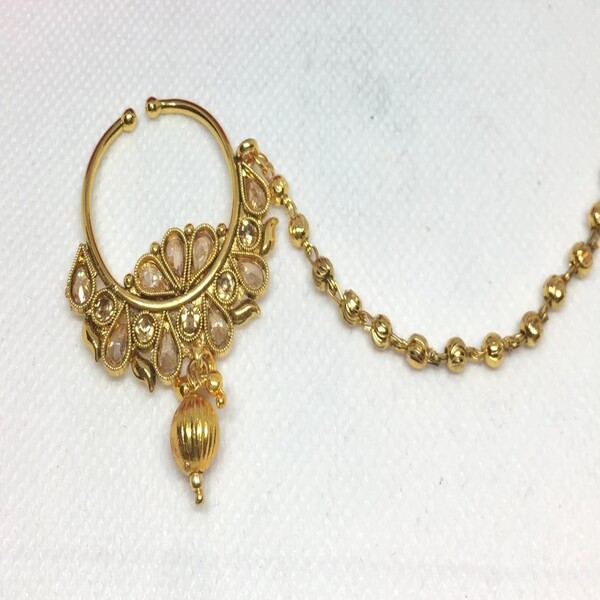
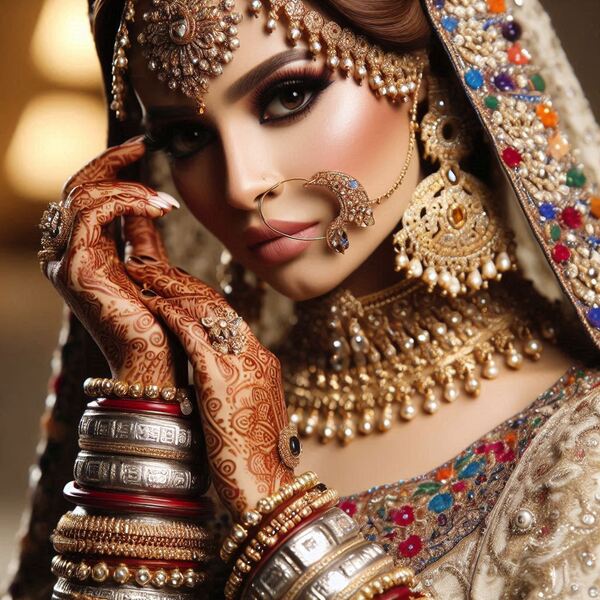
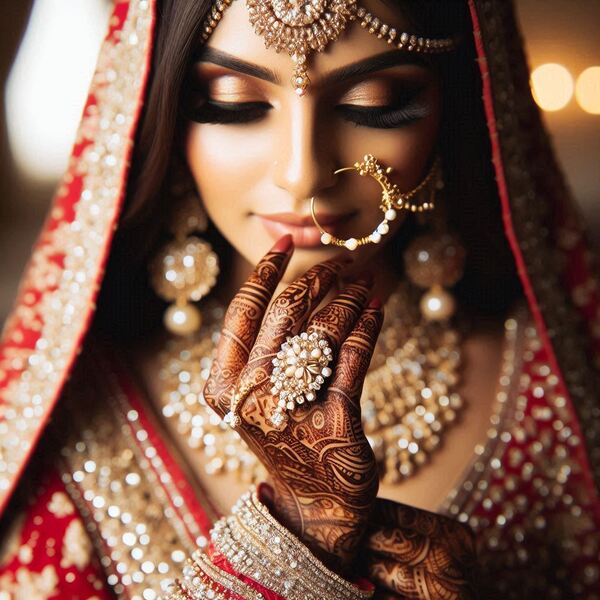
Regional Jewelry of Punjab-Necklaces
Common South Asian Version:
- Necklaces/Rani Haar: In South Asia, necklaces range from simple gold chains to elaborate multi-layered pieces like the Rani Haar, which often feature intricate designs, gemstones, and detailed enamel work. The Rani Haar is popular across the region, known for its regal appearance and use in weddings and special occasions.
Punjabi Distinction:
- Punjabi Rani Haar: Punjabi necklaces, particularly the Rani Haar, are known for their grand scale and bold designs. They often feature broad, layered chains with large pendants, emphasizing size and a commanding presence. The focus is less on intricate detailing and more on the overall grandeur and richness, often using heavy gold and minimal embellishments to create a striking appearance. The Punjabi Rani Haar is often long and layered, with a focus on bold, broad designs that may feature large gemstones or gold pendants. The emphasis is on creating a regal appearance.
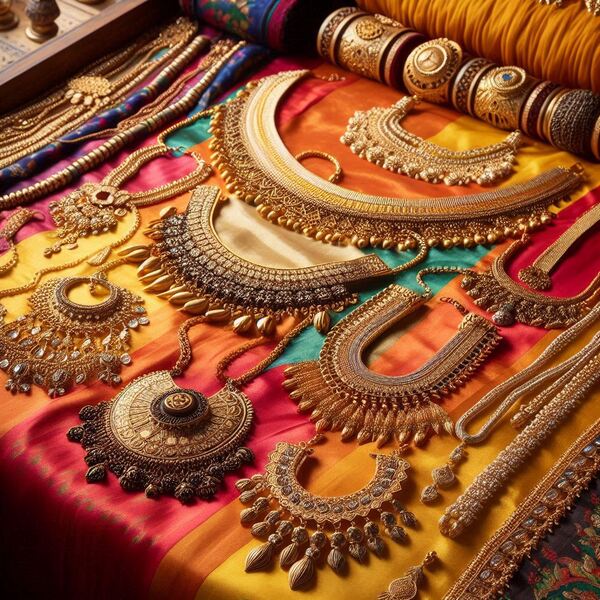
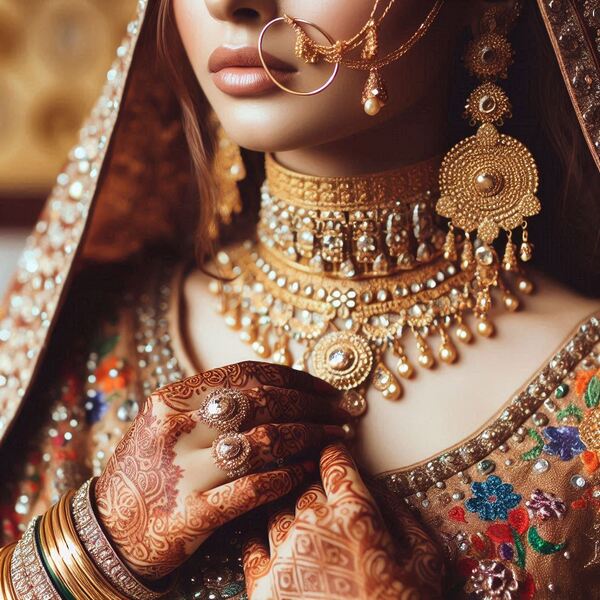
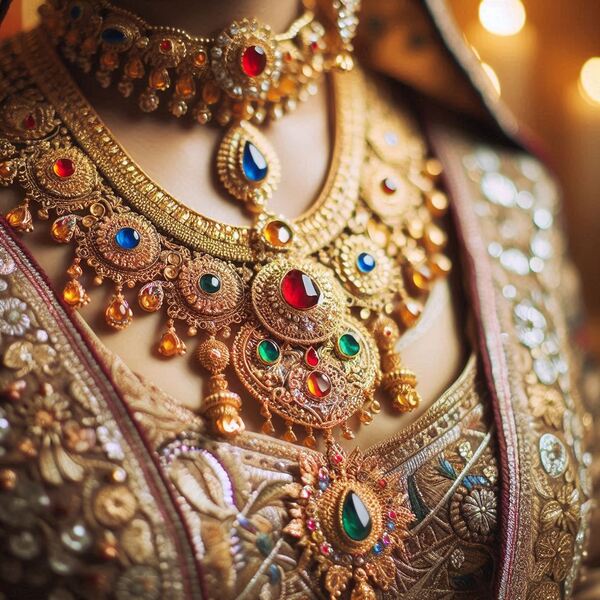
Regional Jewelry of Punjab - Earrings
Common South Asian Version:
- Jhumka/Chandbali: Jhumkay are dome-shaped earrings popular across South Asia, often crafted with intricate patterns, filigree work, and adorned with pearls or gemstones. Chandbalis, crescent-shaped earrings, are also common, featuring detailed designs and sometimes enamel or stone inlay.
Punjabi Distinction:
- Punjabi Jhumka: Punjabi jhumkay are typically larger and bolder compared to their counterparts in other regions. They focus on creating a statement with their size and the use of gold, often with minimal additional embellishments. The design is more straightforward but impactful, with dangling elements that add movement and elegance.
- Cultural Significance: Jhumkas are a staple in Punjabi jewelry, symbolizing tradition and femininity. They are often worn during weddings, festivals, and other special occasions, adding a touch of elegance to the overall attire.
- Gold
Version: In Punjab, jhumkay are typically crafted in
gold, with an emphasis on boldness and simplicity. Gold jhumkas are not
only a sign of prosperity but also a symbol of cultural pride.
- Background/Origins: The jhumka's origins can be traced back to ancient Indian jewelry traditions, where they were worn by women across various regions. In Punjab, the design of the jhumka has evolved to be more substantial and impactful, reflecting the region's preference for statement pieces.
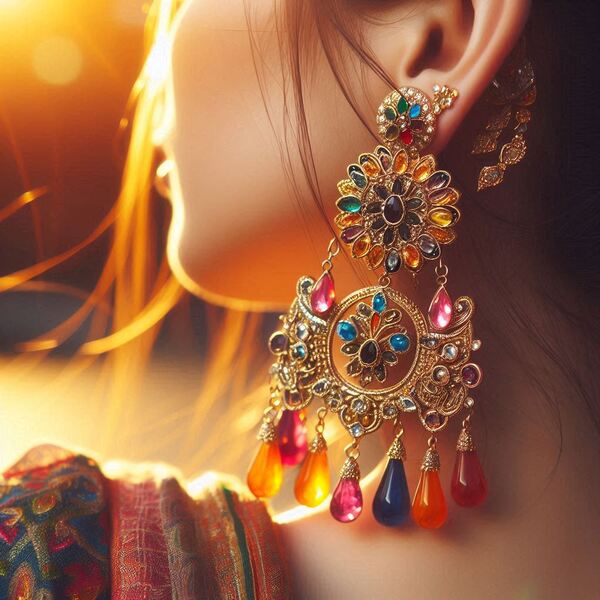
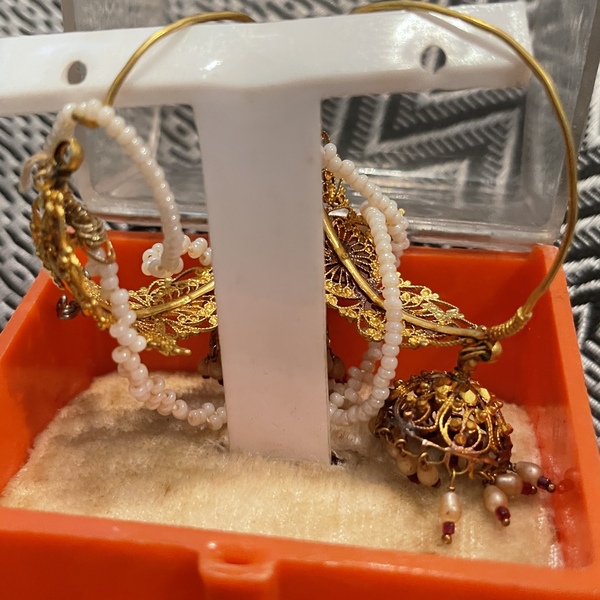
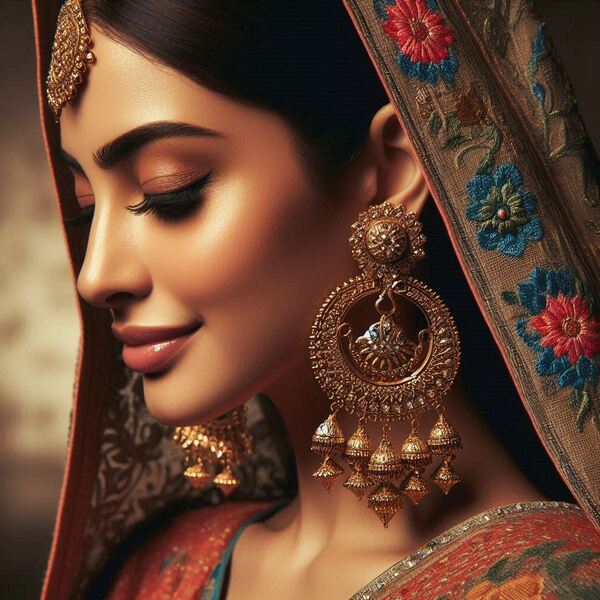
Regional Jewelry of Punjab-Bangles
Common South Asian Version:
- Bangles/Churi: Bangles are a staple in South Asian jewelry, worn in various styles from simple glass or gold bangles to heavily adorned ones with enamel, gemstones, or intricate carvings. In many regions, bangles are worn in large numbers, especially during festivals and weddings.
- Punjabi Distinction: Punjabi bangles are more or less same as the usual South Asian versions, nevertheless, two differnt types are Chura and Kaleere. The Punjabi chura is a distinct set of bangles, traditionally red and white, worn by brides. Unlike the more colorful and heavily ornamented bangles in other regions, the Punjabi chura focuses on the symbolic use of color and often includes minimal gold embellishments. The chura is also paired with kaleere, long dangling ornaments that are unique to Punjabi bridal wear. More on this type is given below.
Chura
Cultural Significance:
- Punjabi Tradition: The chura is a set of red and white bangles traditionally worn by brides in Punjab. It symbolizes marital status and is considered a sign of good luck and prosperity for the bride. The red color represents prosperity, while the white signifies purity. The chura is usually worn for several months after the wedding as a sign of the bride's new marital status.
- Gold Version: While traditionally made of plastic or ivory, churas have evolved, and some modern brides opt for gold-plated versions or gold embellishments on the bangles to add a touch of luxury. However, the symbolic red and white colors remain central to the chura's identity.
Background/Origins:
- Origins: The tradition of wearing the chura dates back centuries and is rooted in the Punjabi wedding rituals-both in Pakistani and Indian sides of Punjab. The chura is traditionally gifted by the bride's maternal uncle, signifying the beginning of her married life. The wearing of the chura is accompanied by other rituals, such as the 'kalire ceremony, where the kaleere are tied to the chura. It is basically a Sikh community's ceremony.
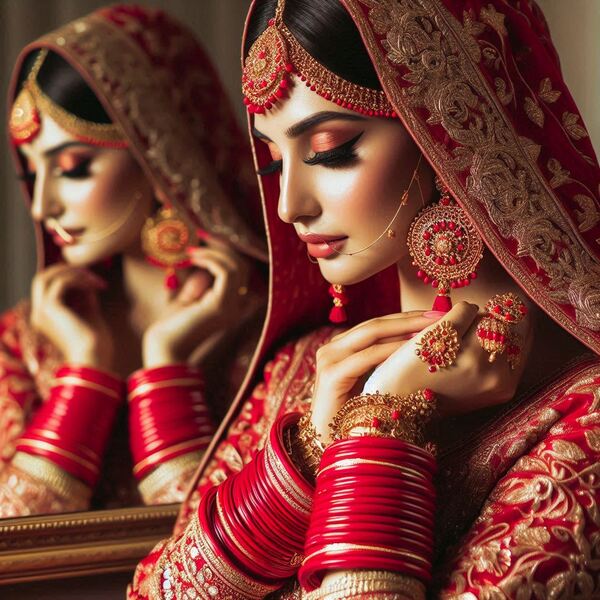
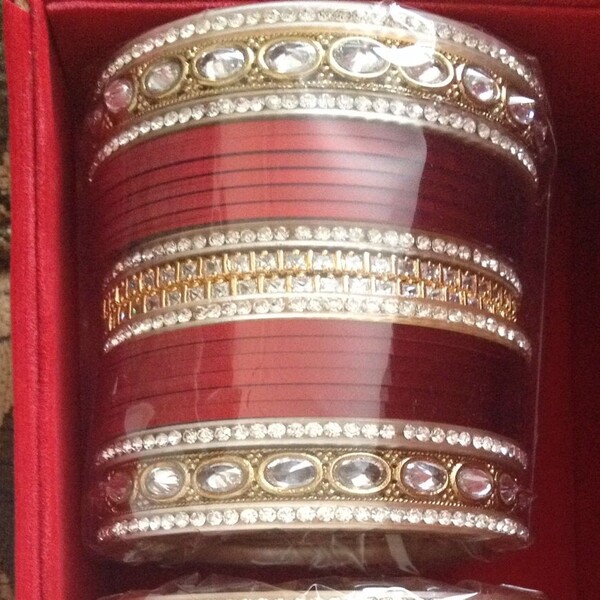
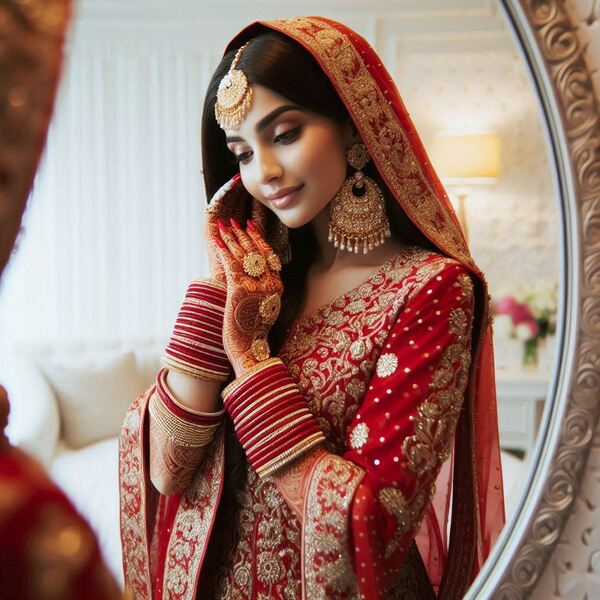
Kaleere
Cultural Significance:
- General South Asian: Similar dangling ornaments are rare outside of Punjab. In other South Asian regions, brides might wear simpler hand ornaments like bangles or bracelets without the long dangling elements seen in kaleere.
- Punjabi Tradition: Punjabi kaleere are unique to this region, often made of gold or silver, and feature dangling elements. The kaleere can be simple or elaborate, but they are always long and designed to be visually impactful. Kaleere are umbrella-shaped ornaments that are attached to the chura and worn by the bride. They are a symbol of prosperity and happiness in the bride's new life. During the wedding ceremony, the bride shakes her kaleere over the heads of unmarried women, and it is believed that if a piece falls on someone, she will be the next to marry.
- Gold Version: While traditional kaleere were made of silver or lightweight materials, modern versions often feature gold or gold-plated designs. These versions add a luxurious touch to the bride's attire and are seen as an expression of wealth and status.
Background/Origins:
- Origins: The kaleere tradition is unique to Punjab - both in Pakistani and Indian sides of Punjab - and is believed to have originated as a way to bless the bride with abundance and joy. The shape of the kaleere is said to represent the bride’s journey into a new phase of life, with the umbrella-like structure symbolizing protection and the long chains signifying the hope for longevity and prosperity in her marriage. It is basically a Sikh community's ceremony.
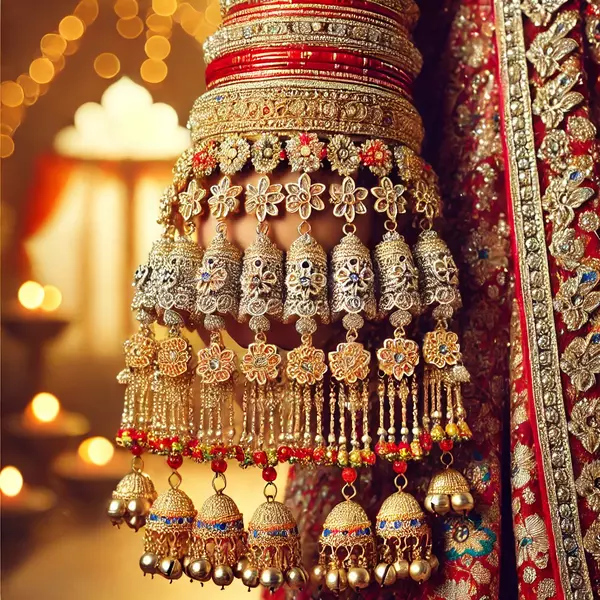
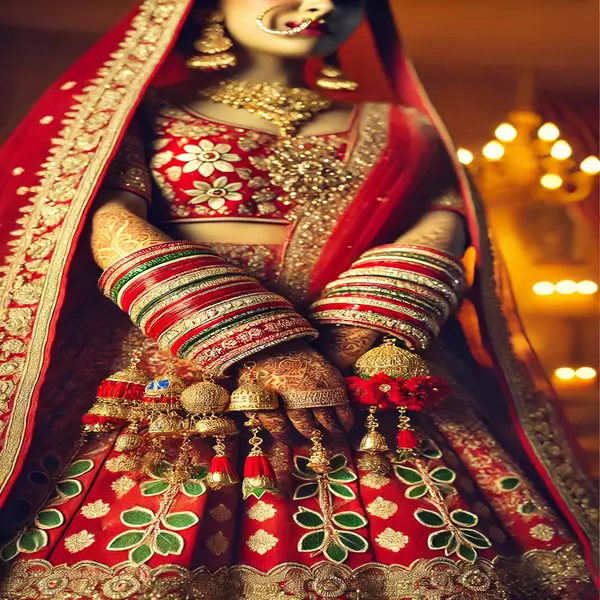
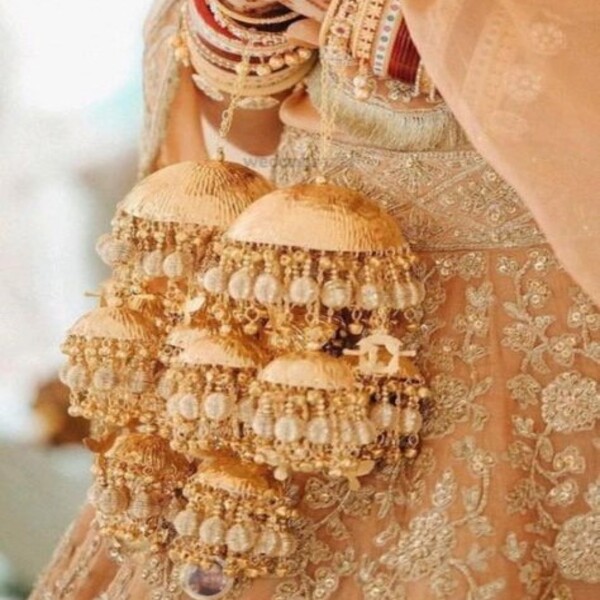
Regional Jewelry of Punjab - Anklets
Common South Asian Version:
- Paizeb (Payal): Anklets, or paizeb, are commonly worn by women across South Asia. They can range from simple silver chains to more elaborate designs featuring bells, gemstones, and intricate carvings. In some regions, anklets are highly decorated and make a jingling sound as the wearer walks.
Punjabi Distinction:
- Punjabi Paizeb: Punjabi anklets tend to be simpler in design, focusing on functionality and the sound produced by the small bells attached to them. The emphasis is on the musical aspect rather than heavy ornamentation, with less intricate work compared to anklets in regions like Gujarat or South India. Punjabi paizebs are relatively simple, with a focus on the sound they make rather than heavy ornamentation. They might feature small bells but are less intricate compared to other regions.
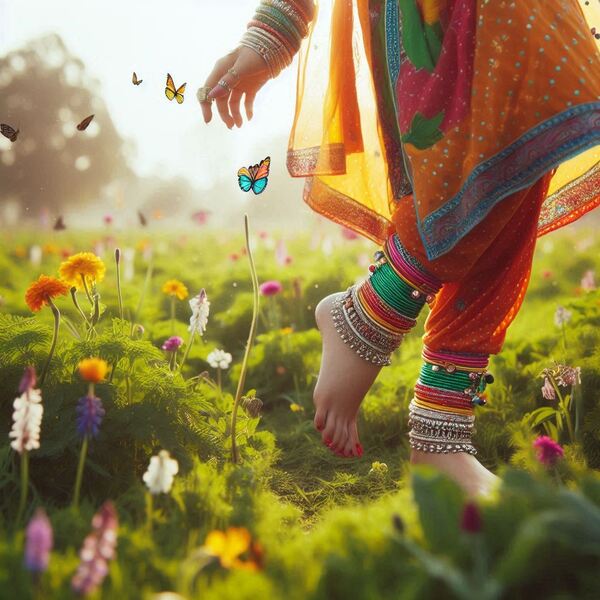
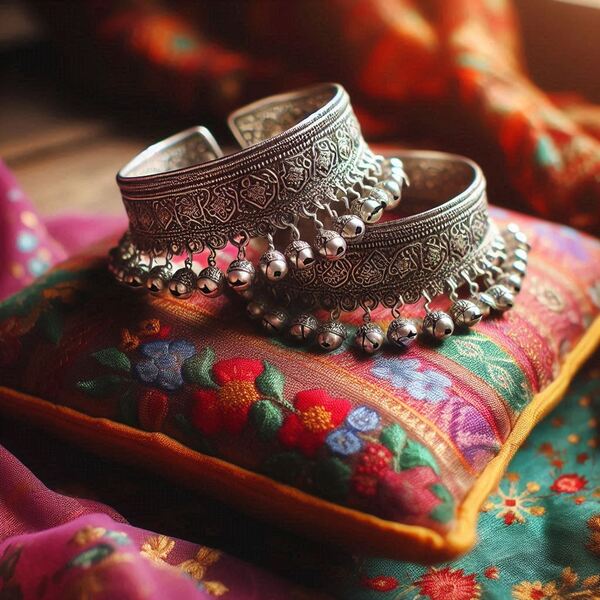
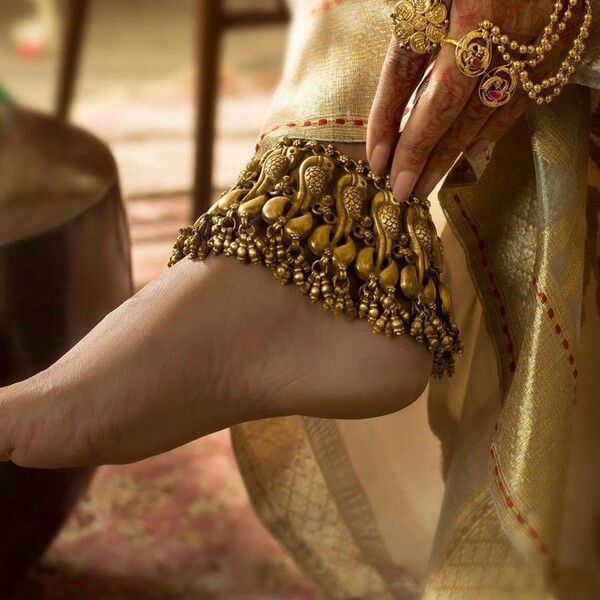
- Home
- Products and Trades ›
- Pakistani Jewelry >
- Regional Jewelry of Punjab


